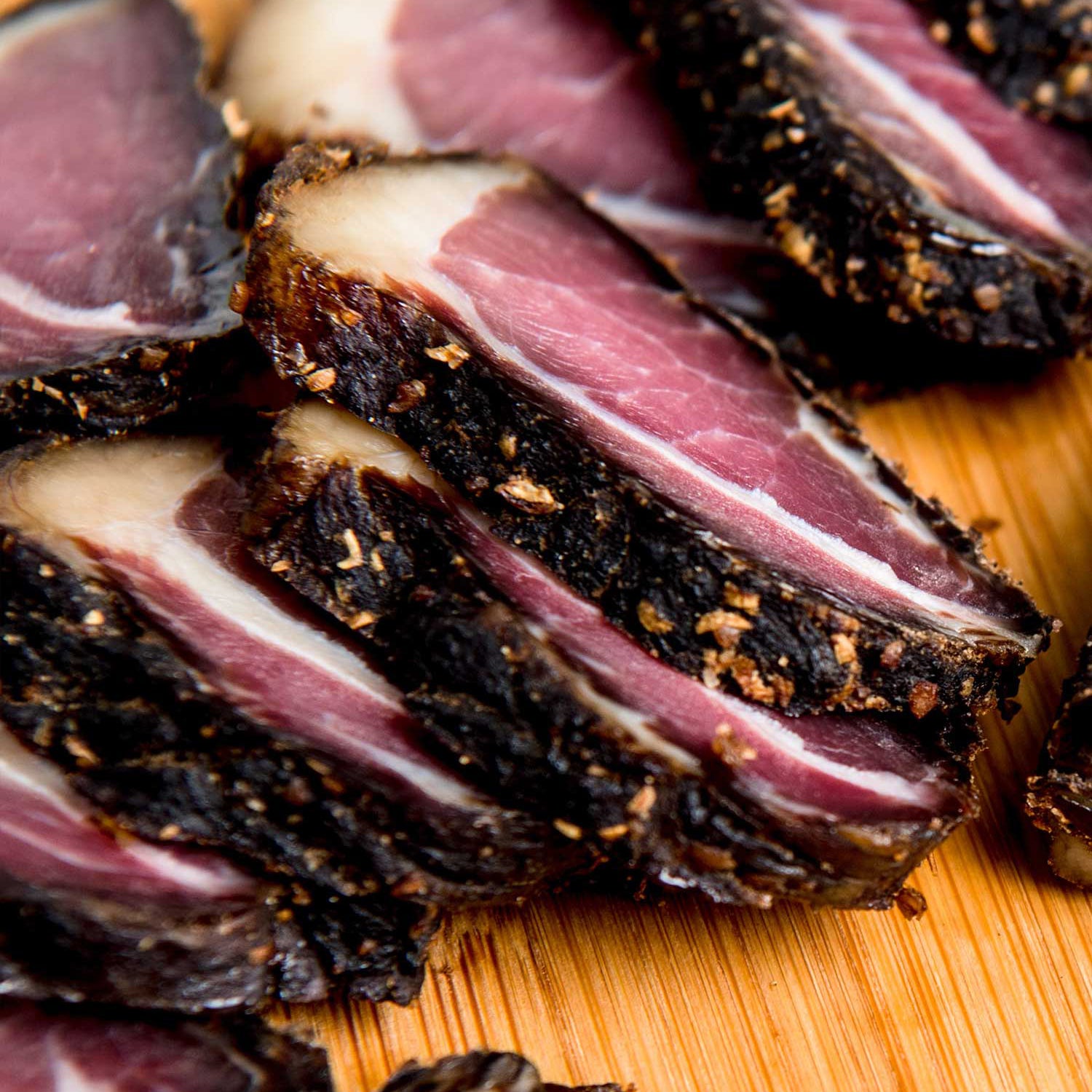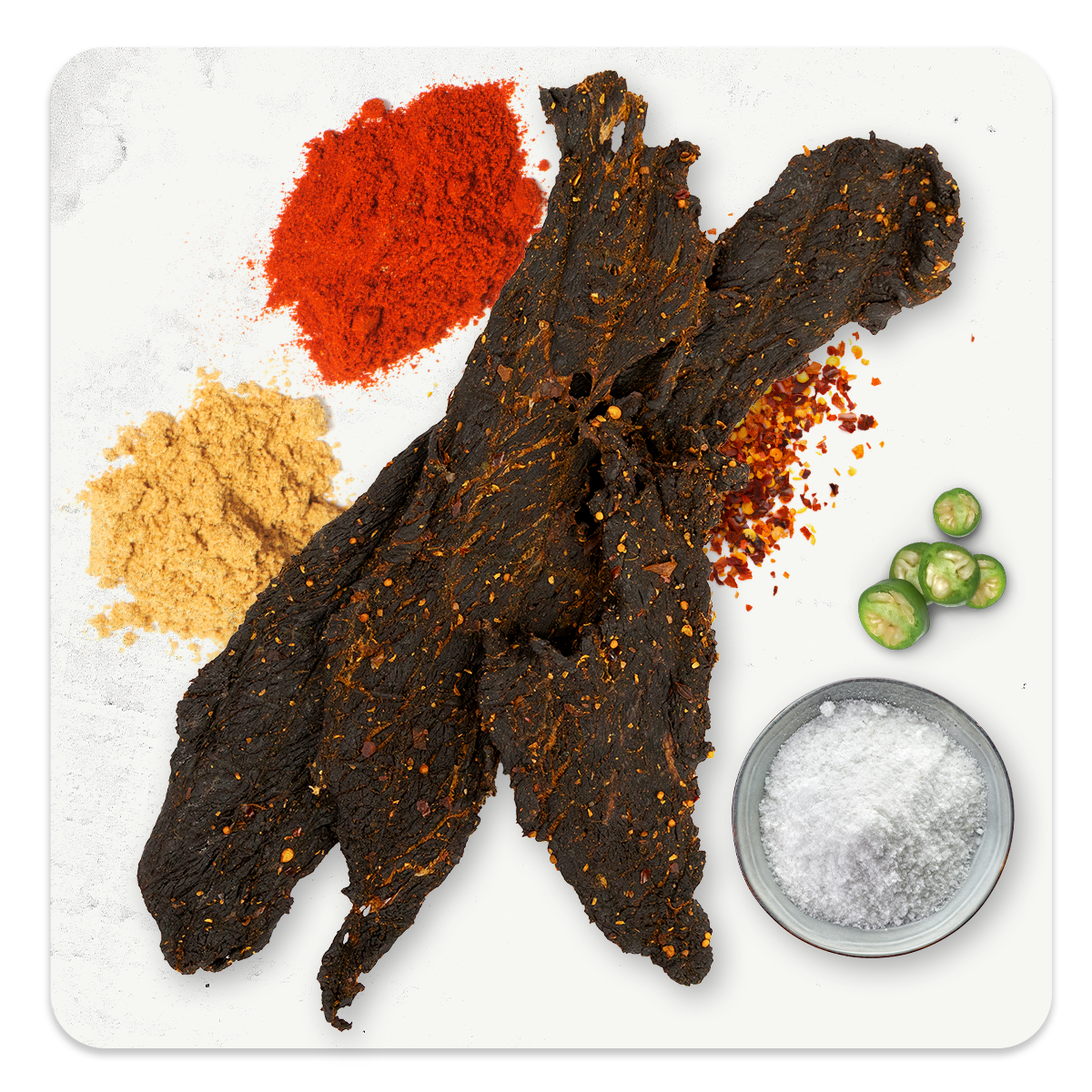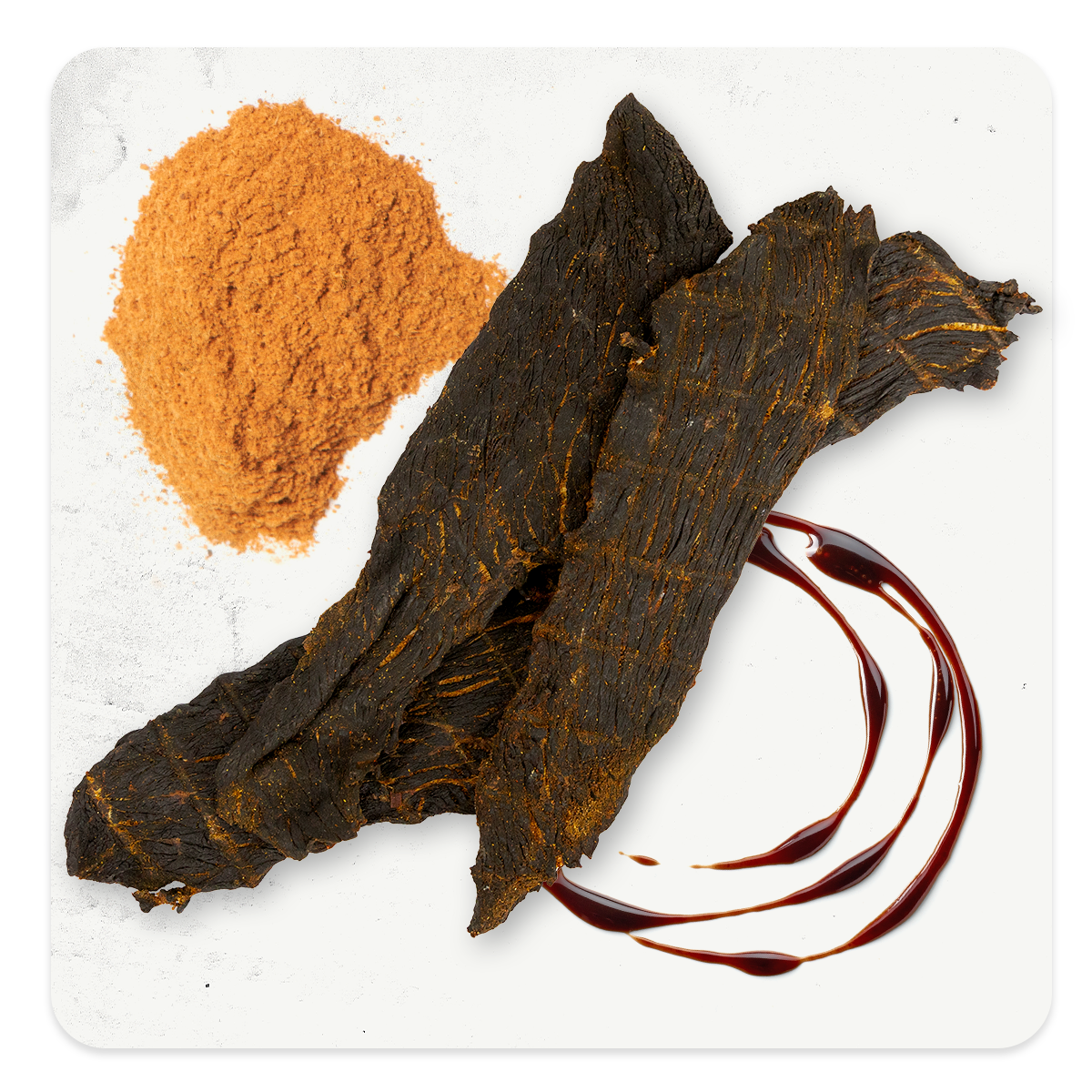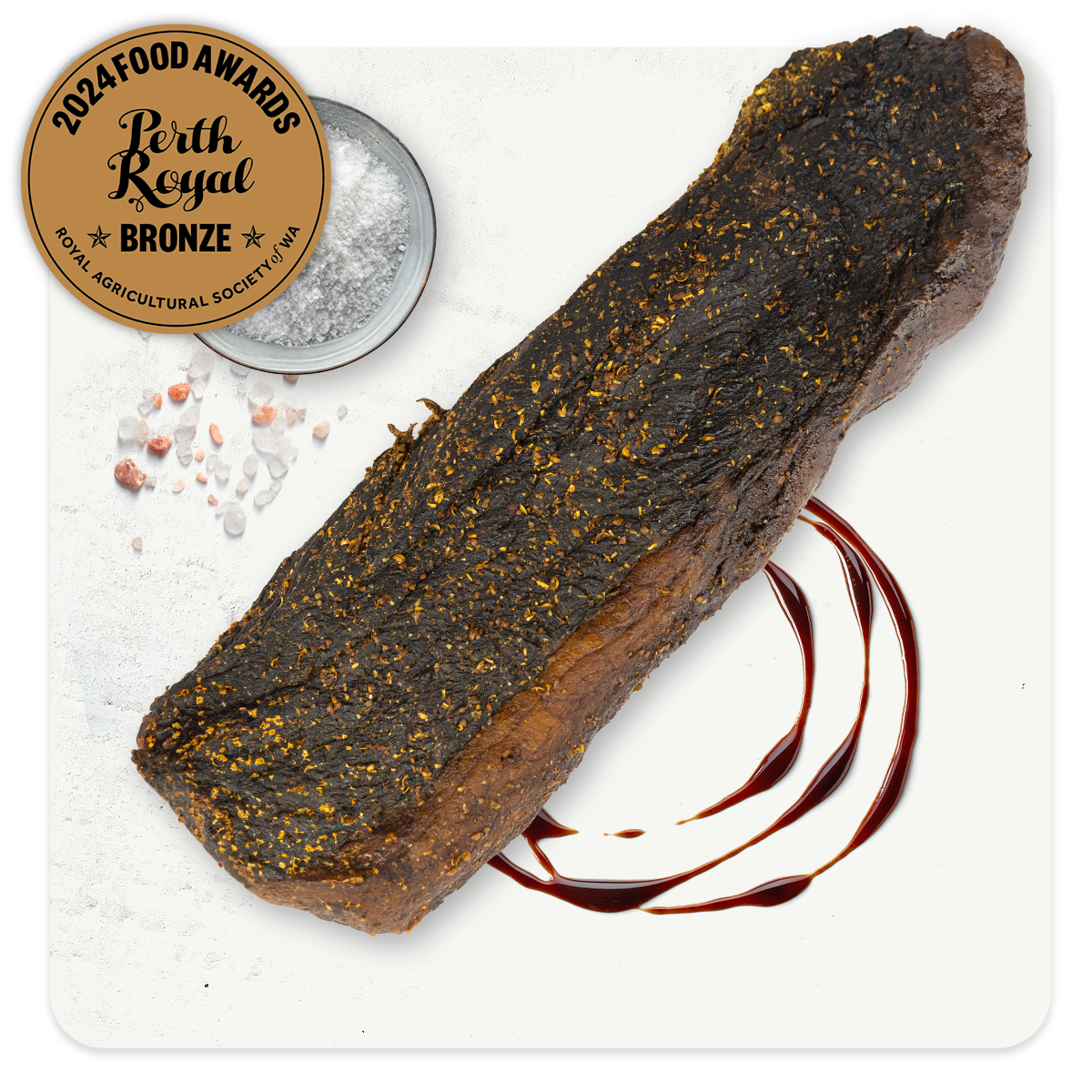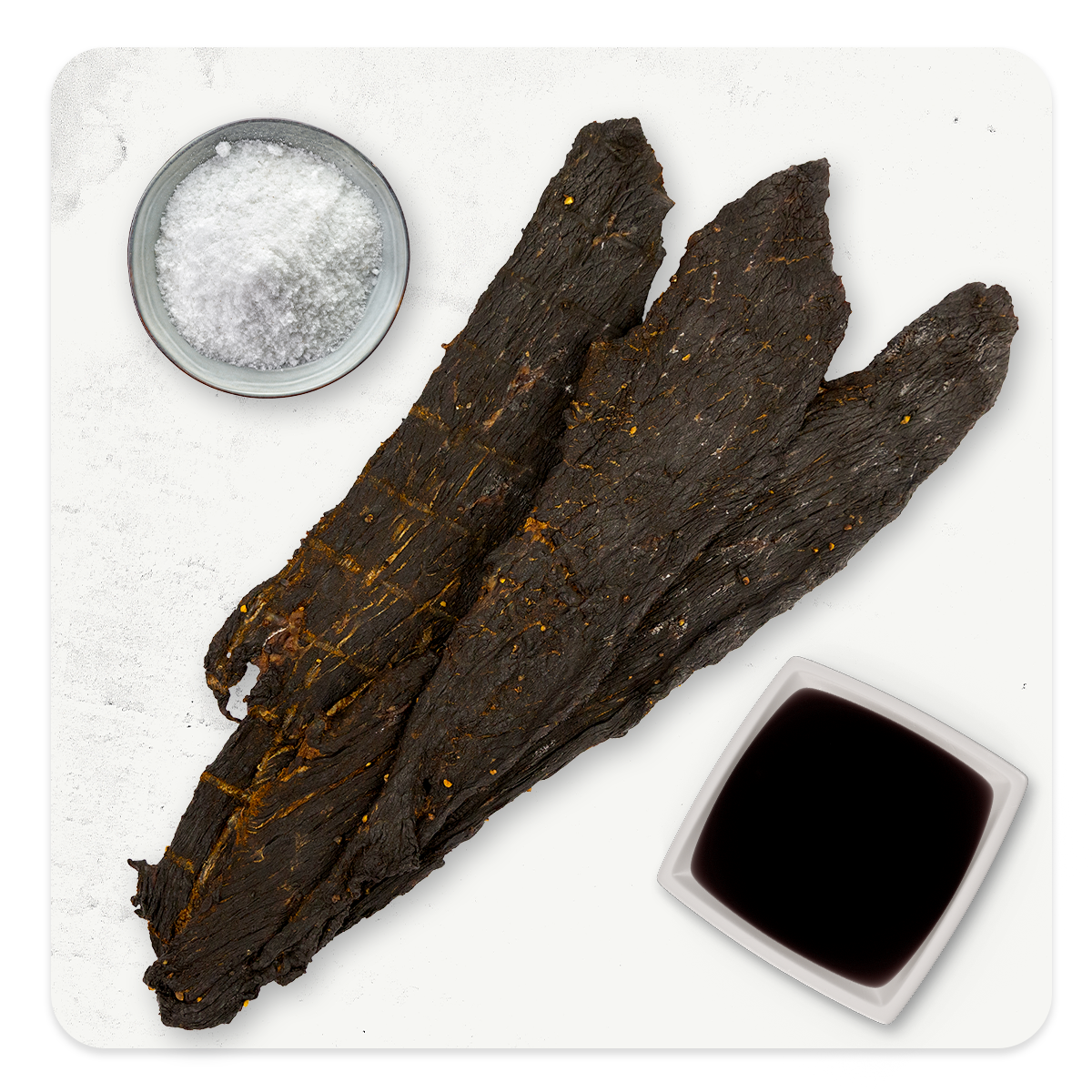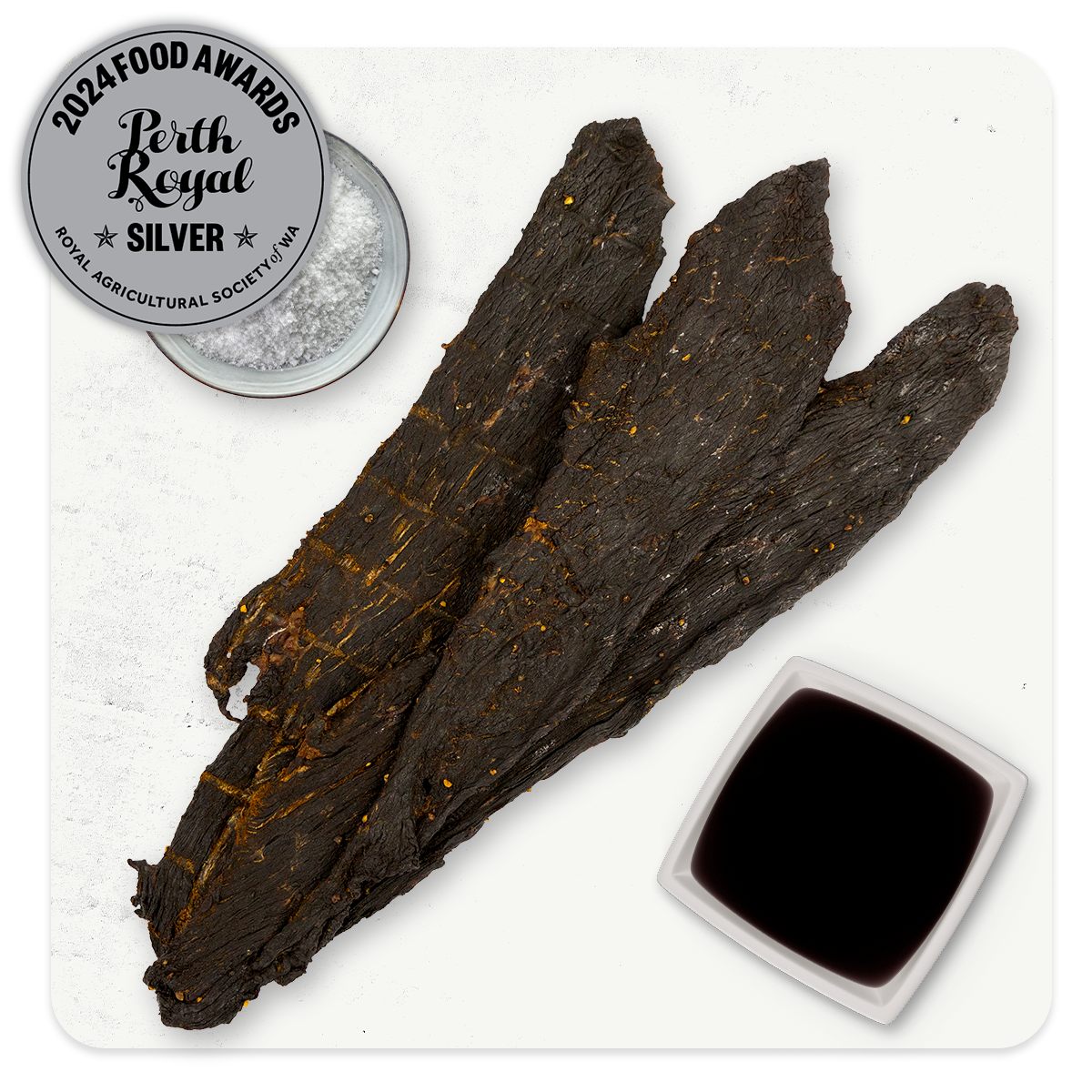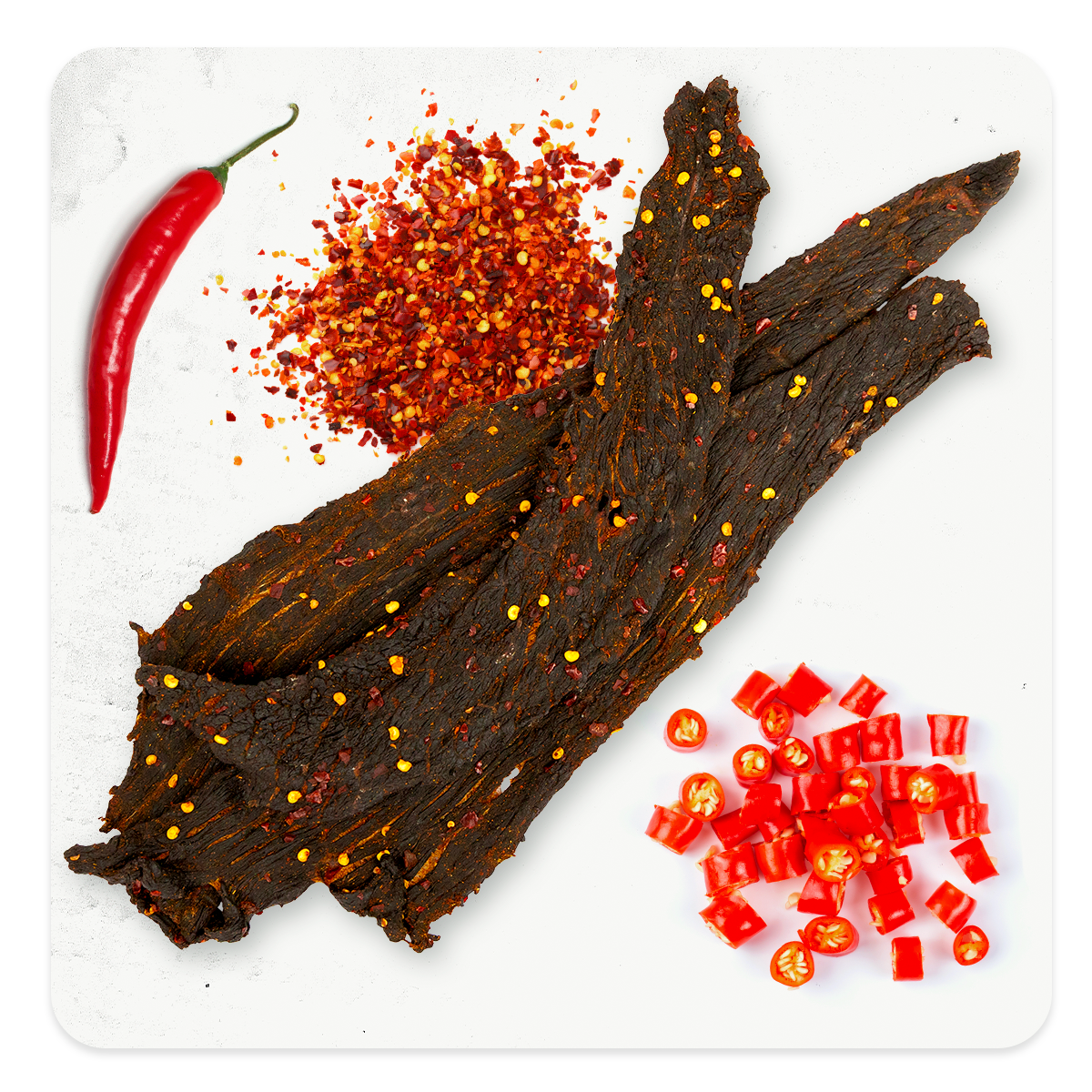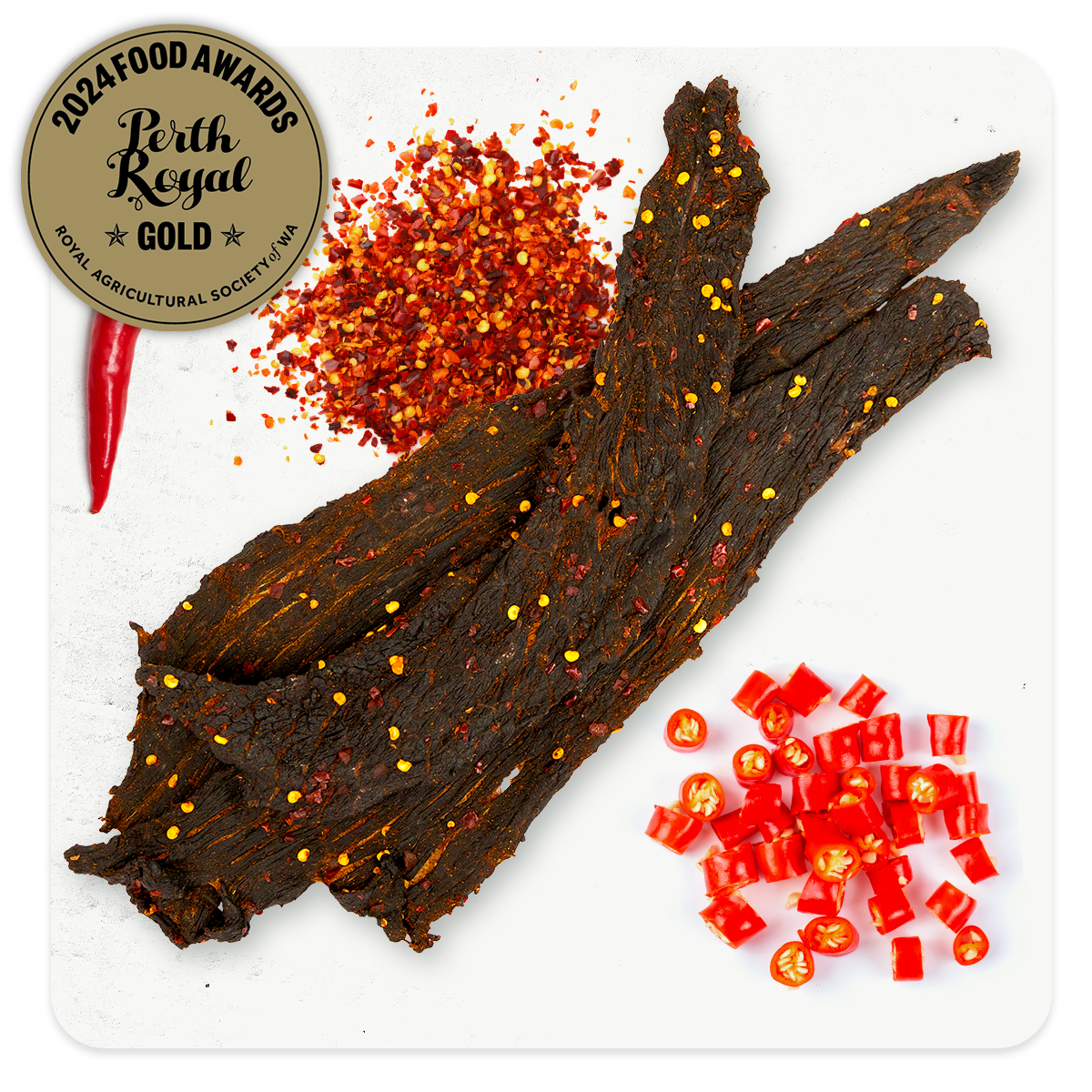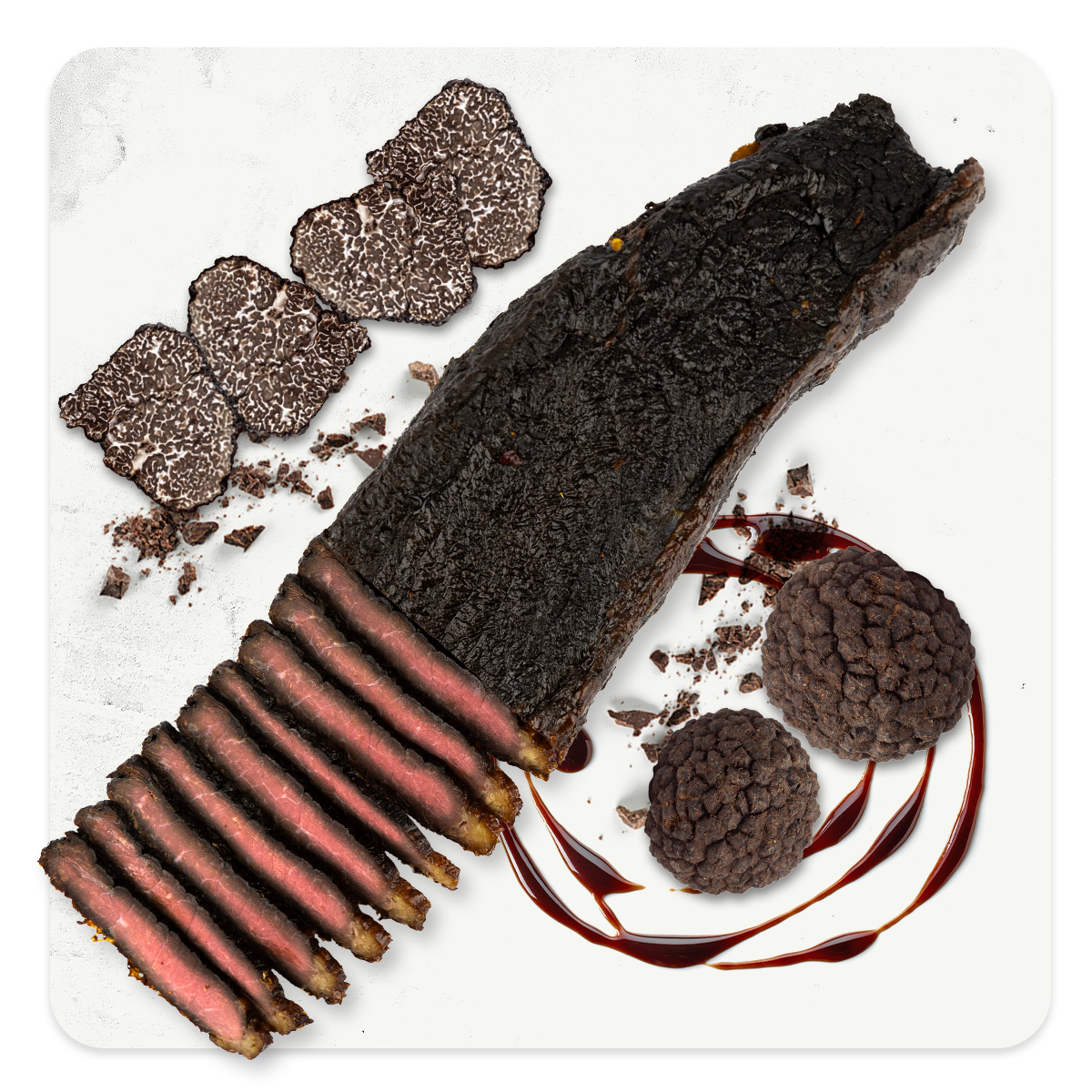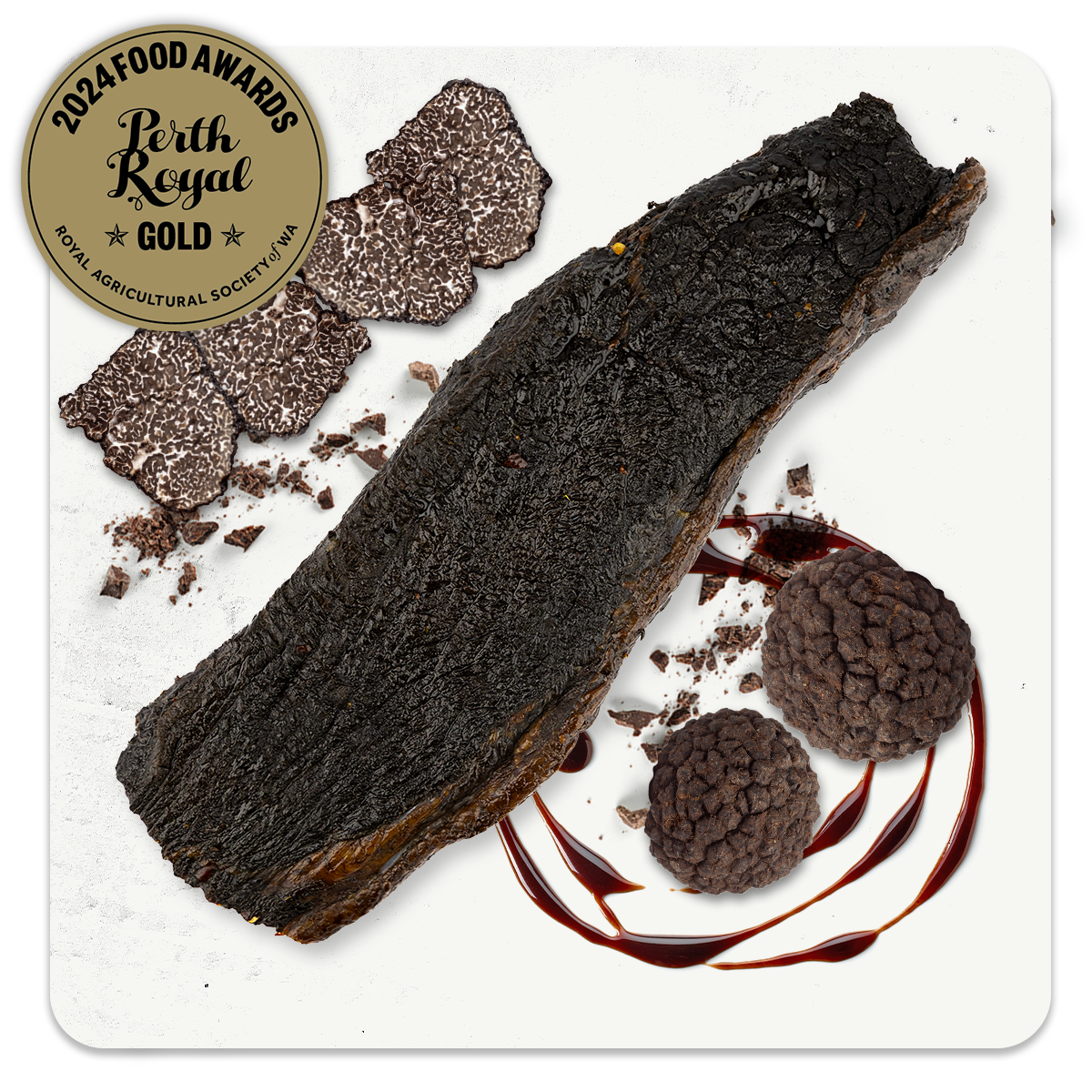Where did Biltong Originate?

The word ‘Biltong’ is derived from the Dutch words ‘Bil’ (buttock) and ‘Tong’ (strip) referring to it simply as a strip of meat. For centuries mankind has strived for a way to preserve their food and long before the time of refrigerators and ice boxes we discovered curing. Originally the people of South Africa preserved their meat by slicing it into strips, curing it with salt and hanging it to dry in the sun. After European settlers arrived in the 17th Century they improved the curing process by using vinegar, saltpetre (potassium nitrate, which kills a deadly bacterium) and spices.
The need to preserve meat was originally a survival technique. Building up herds of livestock took a long time but with native game in abundance, traditional methods were available to preserve large masses of meat. Biltong as it is today evolved from the dried meat carried by the wagon-travelling Voortrekkers (Frontiers of the Cape Colony), who needed stocks of durable food as they migrated away from British rule into the interior of Southern Africa during the Great Trek.
Today biltong is most commonly made from beef, primarily because of its widespread availability. For the finest cuts fillet or steaks cut from the hip such as topside or silverside. Other cuts can be used, but are not as high in quality.
While not necessary for survival in today’s day and age, it is a necessary addition to your diet if you are looking for a healthy low fat, high protein snack.
No matter which snack you choose they both are high in protein and low in fat. This makes them the perfect post meal snack or to take on any adventure.


